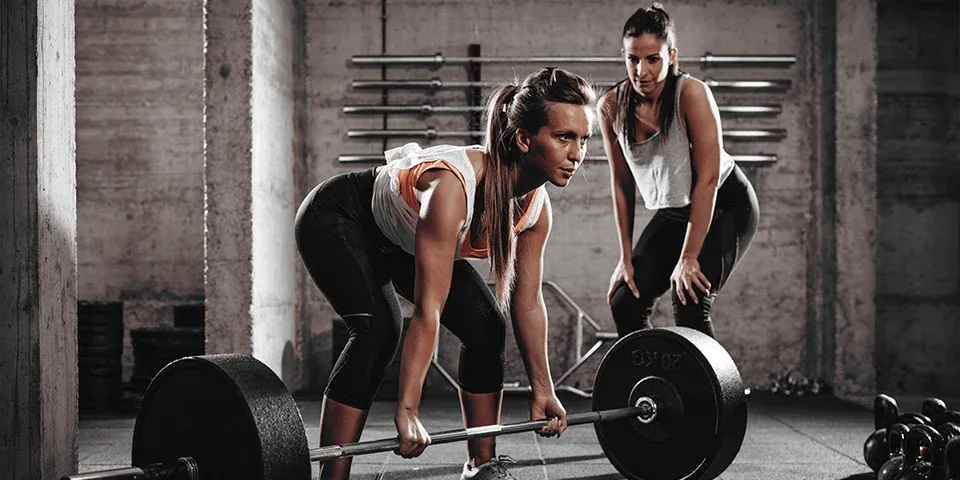Strength and Conditioning (S&C) coaches play a pivotal role in enhancing athletes’ performance through scientifically backed training methodologies. One key area of focus is the deadlift, a fundamental compound exercise that targets multiple muscle groups. The choice of grip in deadlifts is not merely a matter of preference but can significantly affect performance, muscle activation, and injury risk. This article delves into the different grips used during deadlifts, discussing their advantages, drawbacks, and offering coaching tips to optimise training outcomes.
Grip Variations
- Double Overhand Grip: The most basic grip involves placing both hands over the bar, palms facing the lifter. It is often the starting point for beginners due to its simplicity and the natural arm position.
Pros: Enhances grip strength naturally and ensures symmetrical muscle development.
Cons: Grip strength may become a limiting factor in lifting heavier weights. - Mixed Grip (Alternating Grip): Involves one hand facing towards the lifter (supinated) and the other facing away (pronated). This grip is commonly used to lift heavier weights.
Pros: Allows for lifting heavier weights by preventing the bar from rolling.
Cons: May lead to imbalances in muscle development and increased risk of bicep injuries on the supinated arm. - Hook Grip: Involves wrapping the fingers around the bar and then securing the thumb under the fingers. Common among Olympic weightlifters.
Pros: Secure grip that reduces the likelihood of the bar rolling.
Cons: Can be painful for the thumbs, requiring time for adaptation.
Research Insights
A study by Pratt et al. (2020) explored forearm electromyographic activity across different grips, revealing that grip type significantly affects muscle activation patterns. The mixed grip and hook grip allowed for higher loads to be lifted, but with varying impacts on forearm muscle engagement and technical difficulty perceptions.
Jukic et al. (2021) highlighted the ergogenic effects of lifting straps, suggesting their utility in maintaining grip strength across sets, thereby facilitating grip security and performance consistency during prolonged training sessions.
Piper and Waller (2001) provided an overview of deadlift variations, indicating that different grips can be strategically used to target specific muscle groups and adapt training to the individual needs of athletes.

Coaching Tips for Effective Training
- Grip Selection: Encourage athletes to experiment with different grips to find what best suits their needs, considering factors like comfort, injury history, and specific training goals.
- Balance and Symmetry: When using the mixed grip, coaches should ensure athletes alternate their grip between sets to prevent muscle imbalances. Regular assessments of muscular development and symmetry can help identify and correct discrepancies early on.
- Injury Prevention: Emphasise proper warm-up and gradual adaptation, especially when introducing the hook grip. Coaches should also teach athletes to listen to their bodies and adjust grip or load as needed to prevent overuse injuries.
- Grip Strength Development: Incorporate specific exercises to enhance grip strength, such as farmers’ walks, bar holds, and towel pull-ups. A strong grip contributes to overall lifting performance and safety.
- Use of Accessories: While lifting straps can be beneficial, particularly for high repetition sets or when grip strength is a limiting factor, they should not replace the development of natural grip strength. Use straps judiciously, focusing on their strategic application in training cycles.
Understanding the nuances of deadlift grip variations and their implications is crucial for S&C coaches aiming to optimise their athletes’ performance and safety. By combining empirical evidence from research with practical coaching strategies, it is possible to tailor training programmes that cater to the unique needs and goals of each athlete. Adopting a holistic approach to grip training, emphasising balance, injury prevention, and progressive overload, can significantly enhance the efficacy of deadlift training in strength and conditioning regimens.
References
- Pratt, J., Hoffman, A., Grainger, A., & Ditroilo, M. (2020). Forearm electromyographic activity during the deadlift exercise is affected by grip type and sex. Journal of Electromyography and Kinesiology, 2020. Click here to review the full research article
- Jukic, I., García-Ramos, A., Baláš, J., Malecek, J., & García-Ramos, M. (2021). Ergogenic effects of lifting straps on movement velocity, grip strength, perceived exertion and grip security during the deadlift exercise. Physiology & Behavior, 2021. Click here to review the full research article
- Piper, T.J., & Waller, M.A. (2001). Variations of the deadlift. Strength & Conditioning Journal, 2001. Click here to review the full research article
Elevate Your Coaching with Our Level 4 Strength and Conditioning Course
Take your coaching expertise to the next level with our Level 4 Strength and Conditioning Coaching Course. Tailored for coaches who aim to provide cutting-edge training techniques, this course perfectly complements insights from our article, “Grip Variation in Deadlift Training“. Delve deeper into the science of strength training, understand the biomechanics of exercises like the deadlift, and learn to apply grip variations effectively to enhance your clients’ performance and results. Become the coach who not only knows the theory but applies it with precision. Start your journey to mastery at TRAINFITNESS.
Strength & Conditioning Coaches Course – Distance Study

